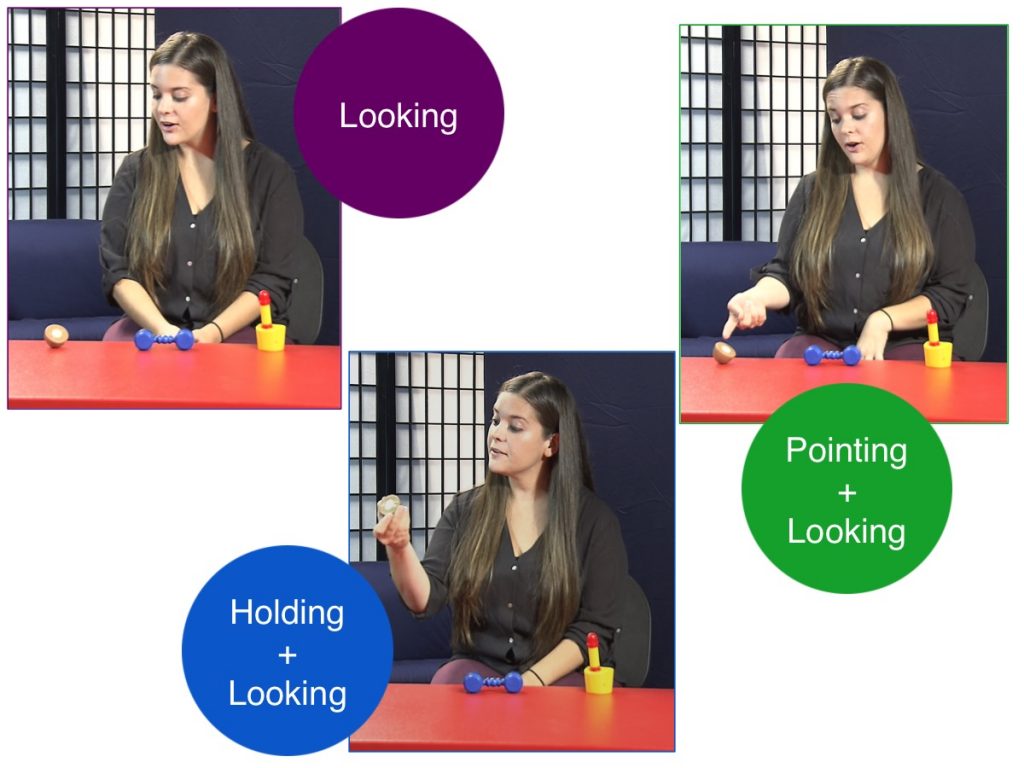
In the video, you might have noticed that Julia used different forms of nonverbal communication to indicate which object she was talking about. She used eye gaze to look at the object. Julia also pointed to the object while looking at it. She looked at and held the object. She did each of these things while labeling the object “fleurg.”
Eyes tell us a lot about what other people are interested in, and what they are thinking. For example, they tell us about other people’s emotions, desires, and goals. Just like you, babies can learn a lot by watching other people. Infants rely on nonverbal social cues such as eye gaze before they develop language.
Eye gaze is an important form of nonverbal communication not only during the early years of development but throughout life. In this module, you will learn about the importance of eye gaze in children’s developing understanding of people, objects, and events in their environment.
-
- Autism Spectrum Disorder (ASD)
- a developmental disorder that impairs a child’s social and communication skills
- Directing attention
- using eye gaze or a gesture to direct another person’s attention to an object or event
- Following attention
- following another person’s eye gaze or gesture
- Gaze following
- looking at what another person is looking at
- Joint attention
- shared attention between social partners to an object or event